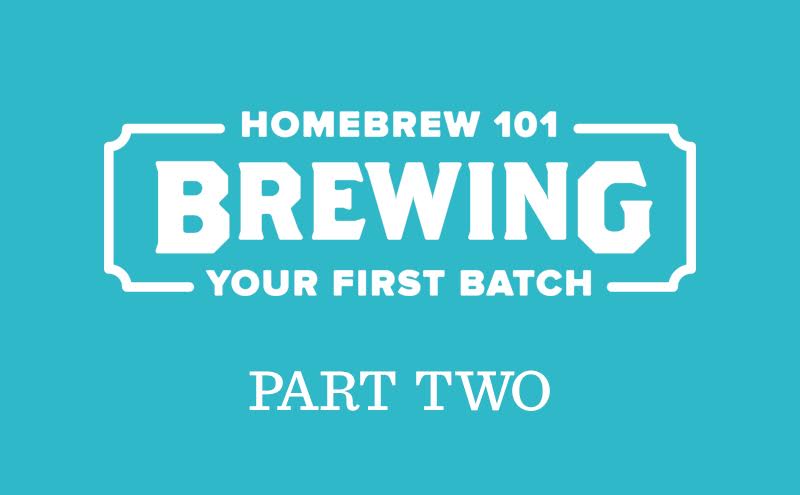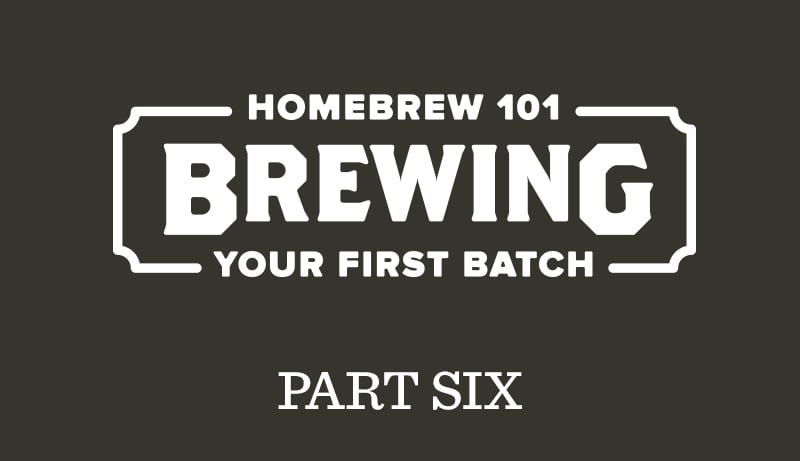
Homebrewing is an art form. Some like to draw. Some like to paint. Some like to make music. People enjoy these hobbies because they’re creating something whole from a collection of separate parts. Making beer is similar in this way.
Artists never perfect their form. It’s a continuous process. They also improve with time. So remember this when you’re brewing. It’s a never-ending, ever-fulfilling hobby that you’ll want to practice. Don’t get discouraged. Soon enough you’ll have a finished product that you thoroughly enjoy.
And hopefully you’ll meet other enthusiasts along the way - people you can share your experiences (and recipes) with. Now, let’s get started.
Beer Brewing Ingredients
Beer is made from a combination of barley, water, hops, and yeast. There’s more to it of course, but broken down, it’s that simple.
As you read these instructions, bear in mind that recipes vary. We recommend trying an ingredient kit to start, as most kits come with detailed instructions that will follow much like the ones below, but the kit instructions will specify at which time each ingredient is added.
Homebrew Equipment
If you’re just starting out, we advise purchasing a home brewing equipment starter kit. That way, you’ll have everything you need to brew your first batch. If you’d rather purchase your equipment piece by piece, or you have some pieces to start, and you just need a few things, we’ve provided this list of essential equipment:
- Glass Carboy, Small Mouth, 6 Gal New
- Brewcraft Fermenter - Plastic - 8 Gallon
- Easy-Flow Plastic Bottle Filler - 5/16" Diameter
- 27" Nylon Carboy Brush - For 5-Gallon Carboys
- Beer Siphon, Tube, and Clamp Kit
- 18" Boil Proof Plastic Homebrew Spoon
- #6 1/2 Solid Rubber Stopper
- Beer Bottles - Amber Glass - 330 mL (11.2 oz) - Case of 24
- Gold Crown Oxygen Absorbing Beer Bottle Caps - 144 Plain Caps
- S-Shaped Airlock
- Stainless Steel Brew Kettle - 20 Quarts (5 Gallons)
- Homebrew Tap and Sediment Reducer
- The Easy Auto Siphon Cane/Plunger - 3/8" Hose Attachment for 5/16" Tubing
- Glass Stem Homebrew Thermometer
- Brewcraft Triple Scale Thermohydrometer
- Emily Wing Bottle Capper - Red Plastic
- Chlor-Tab® Bar Sink Glassware Sanitizer
Brewing
- Sanitize all equipment
- Turn stove on medium-high heat
- Collect water in stock pot - amount varies by recipe (*Note: good water = good beer, and vice versa)
- Pour grains into straining bag and tie a knot at the top of the bag
- Toss bag lightly to knock off excess grain dust
- Place the grains in the water and tie the opposite end of the bag onto the handle of the stock pot
- Steep for 20 minutes, or until the water reaches 160 degrees F
- Lift the grain bag and the let the water drain - do not squeeze
- Raise water to boil, turn off the stove, and add your malt - stir until dissolved (*Note: If using liquid malt extract, soak it in warm water for a few minutes and turn off the stove before pouring)
- Once malt is dissolved, you have wort - turn the heat back up, bring the wort to a boil, and wait 60 minutes
- While wort is boiling, add the hops at the time(s) specified by recipe
- Add all other ingredients at time(s) specified by recipe (*Note: Keep a constant eye on your boil - if boil over starts, reduce heat and stir, or spray with cool water)
- Let the wort cool to 72 degrees F using a wort chiller or an ice bath (*Note: try to cool wort as quickly as you can)
- Once the wort is below 72 degrees F, use the hydrometer to check the specific gravity of the wort - write this number down (between 1.030 and 1.100), and discard the sample wort
Fermenting
- Sanitize fermenting equipment and yeast pack
- Remove the hops and add the cooled wort to the fermenter, leaving any thick sludge at the bottom of the pot - if necessary, pour in extra pre-boiled water to reach desired volume
- Seal and rock fermenter for a few minutes to mix and aerate wort (*Note: before doing this, make sure the side of the fermenter is not warm to touch)
- Uncover the fermenter and add the yeast
- Fill the airlock with sanitizer and insert into the stopper
- Move the fermenter to a dark, quiet spot
- Take a break, have a beer, and clean up
- After 10-20 days, fermentation should be complete
- Use the hydrometer to check the specific gravity - the difference between the original gravity (OG) and final gravity (FG) will tell you the approximate alcoholic strength of your beer (*ABV Equation: OG - FG / .0075 = % ABV)
- If completing a secondary fermentation, you’ll transfer the fermented beer to a carboy, where the beer will sit in a cool, dark place for a specified time period
Bottling
- Assemble the bottling bucket and auto siphon (*Note: make sure spigot and gasket are on the outside, nut on the inside)
- Hand tighten, careful not to over tighten
- Leak test the bucket with regular water
- Sanitize all bottling equipment
- Sanitize however many bottles and caps you plan to use (*Note: about 50 12-oz bottles should cover a 5-gallon batch)
- Make and mix priming solution - ⅝ cup table sugar and 16 oz water
- Bring priming solution to boil, cool for five minutes, and pour into the bottling bucket (*Note: make sure the spigot is closed)
- Siphon beer from the fermenter into the bottling bucket
- When the bucket is full, stir gently with the auto siphon to mix the beer and priming solution
- Attach bottling hose to bottle filler and spigot
- Open the spigot and fill the bottles by pressing the filler against the bottom of the bottle - lift up on the filler to stop pouring (*Notes: Leave one-inch of headspace in each bottle)
- Cap bottles and move to quiet dark spot - ideal temperature: 68-70 degrees F
- Leave the bottles to condition for about 2 weeks
Drinking your home brewed beer
We shouldn’t have to describe this part to you, but we do have a few tips.
If you’re ready to try one right away, by all means, do so. Keep in mind, however, that some beers improve with time, while others are best consumed within a few months. As a general rule, mild - medium strength beers and any hoppy beers are best enjoyed fresh, any time from 3-12 weeks after bottling. Stronger, darker beers are sometimes at their best after 12-20 weeks, or even longer, depending on the style. Lagers are best if not bottled until 4 weeks after brewing, and allowing to rest for another 4-6 weeks in the bottle.
These are rough guidelines. Do some research, join homebrew forums, and talk with other enthusiasts. If you’re thinking of trying something new, but don’t quite know how, pose the question to forum members. Chances are, someone’s tried it, and they can tell you what to look for and avoid.
Now go enjoy your new hoppy hobby.







Leave a Comment